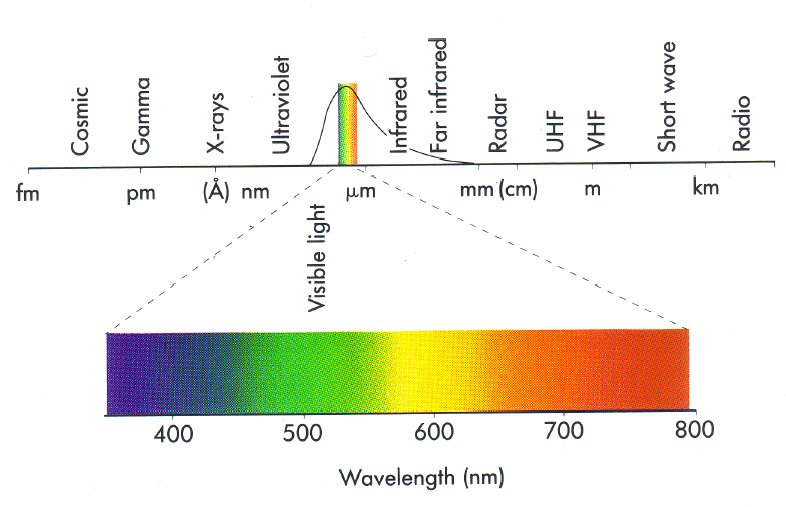Heat
Infrared energy is what we experience in the form of heat every day, such as sunlight, a fire, a radiator or a warm sidewalk. It lies between the visible and microwave sections of the electromagnetic spectrum. Infrared light has a range of wavelengths from red light to violet. The rate of radiant energy emitted per unit wavelength interval is called the spectral energy distribution function.
As indicated in the diagram below only a narrow band between 380 nm and 780 nm of the solar spectrum received at the earth's surface is visible to the eye, whilst the radiation below 380 nm (ultraviolet) and between 780 nm and about 3000 nm (near infrared) and beyond is invisible.

When infrared waves strikes the surface of glass, they are either: Reflected, Transmitted or Absorbed.
Reflectance
Solar reflectance is a measure of the ability of a surface material, glass in this instance, to reflect sunlight (including the visible, infrared, and ultraviolet wavelengths) on a scale of 0 to 1.
Transmittance
Transmittance is the fraction of radiant energy that, having entered a layer of absorbing material, reaches its further boundary. For example, when sunlight hits a glass surface, some amount of light is absorbed by the glass, some is reflected back into the atmosphere, and some is transmitted to other surrounding objects or the ground below. The latter quantity determines the glass transmittance, which is typically 10% to 30% in the summertime.
Emissivity is the ability of a surface to absorb or emit electromagnetic radiation. Glass naturally has a high emissivity. However when a low emissivity coating (Low-E glass) is applied, such as Pilkington K Glass™, the glass surface does not absorb the radiant energy but reflects it back into the room enhancing the U value of the glazing. As a result National building regulations (Part L) on improving the energy performance and efficiency of windows have been enforced as energy conservation measures.
Total Solar Heat Transmittance - total solar heat transmittance is the total amount of heat passing through the glazing. It is determined or measured using Shading Coefficients.
Absorptance
All the heat energy absorbed produces heat (in special circumstances some wavelengths excite molecules giving rise to fluorescence).
Heat flows from higher to lower temperatures. Therefore the heat produced by absorption raises the temperature of the material beneath the surface, which is either conducted into the material or dissipated from the surface to the surroundings by reradiation, conduction and convection.
The type of glass coating used influences each of the above factors. An excellent range of Pilkington Solar Control products have been developed to vary and suit the reflectance, transmittance and absorption factors required.